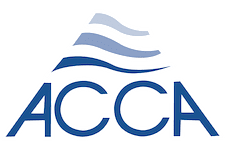More and more people have stopped using split AC units and are switching to a central system instead. Besides being quieter, a central AC unit can also distribute cold air evenly throughout the house. However, before you decide to install a central AC system, it is best to know how it works first.
A central AC system has three main parts: an evaporator, a condenser, and a compressor. The evaporator is located inside the house, usually in the basement or attic. The condenser is outside the house, and the compressor is between the two.
The Components
First, you need to know the basic components of a central AC system. Here they are:
- The thermostat is the device that detects the air temperature. You can also set it to a specific temperature that you consider ideal. The thermostat will signal the AC to start automatically when the indoor air passes your ideal temperature.
- Registers are the grills that work as doors for the indoor air. Each room of your house will have at least two registers. The supply register is located near the top of the wall, close to the ceiling. The return register is mounted down on the floor.
- Ducts allow the air to flow in and out of the room. This piping system connects registers to an air handler. Just like with registers, there are two kinds of ducts. Supply ducts are for delivering chilled air into the room, while the return ducts send the warm indoor air back to the air handler to cool it.
- The evaporator coils are filled with a refrigerant, a substance that helps absorb heat. As the refrigerant evaporates, it absorbs heat from the air around it, causing the air to become cooler. The cooled air is then blown through the house by a fan.
- The condenser coils are filled with a different type of refrigerant, which helps release the heat absorbed by the evaporator. As the refrigerant condenses, it releases heat into the air outside, causing the air to become warmer.
- The compressor is responsible for circulating the refrigerants between the evaporator and the condenser. It helps to maintain a balance between the two so that the system can work properly.
How the Central AC Unit System Runs
When the room temperature hits the level you set, the thermostat will signal the AC system to start. First, the air handler unit will suck indoor air from the return register through the return ducts. Then, a blower inside the air handler will push the air into the evaporator.
The evaporator is usually a big metal coil that looks like a car radiator. It’s full of cold Freon gas. The blower will blow air across the evaporator coils and the indoor air will pick up the cold from the coils.
The evaporator will then strip the heat out of the air using the liquid refrigerant. This process causes the air to turn cold. Then, the air handler will push the chilled air through the supply duct. That chilled air will end up entering the room via the supply register. Then, the air in the room will flow into the return duct to restart the whole process.
Now let’s get back to the evaporator. As the refrigerant absorbs the heat from the air, it will turn into gas. Then, the hot refrigerant gas flows to the condenser unit outside, dispersing heat to the outdoor environment. Finally, with no heat to carry, the refrigerant will turn back into a liquid and flow back to the evaporator to repeat the cycle.
Knowing how central AC works may help you decide whether you should install one or not. And if you already use one, a better understanding of the system might help you see the importance of regular maintenance and proper treatment. Still, always hire a licensed HVAC contractor to install or service your central AC.
ECM Air Conditioning, with its headquarters located in Boynton Beach, FL, provides air conditioning services within Palm Beach County, Broward County, Martin County, and St. Lucie County. If you’re looking to have a new HVAC system installed, we’re on-call and ready to assist you. So if you’re in need of an HVAC installation, don’t hesitate to contact us today to schedule an inspection! Our HVAC installation experts will check your ductwork, measure, check wire sizes, and more before making recommendations to ensure maximum efficiency and comfort. Call us at 561-295-1763 or contact our HVAC installation team online by clicking here.

















